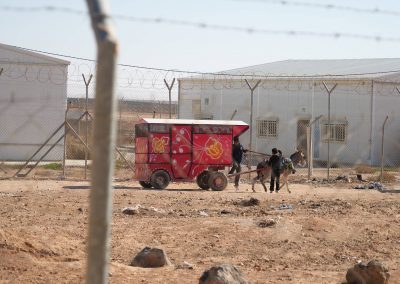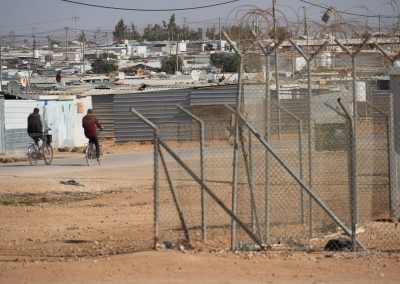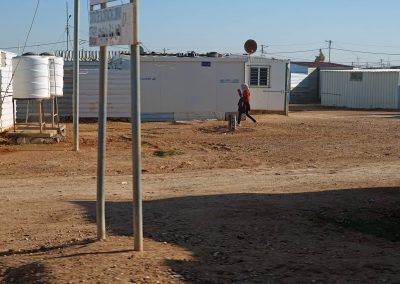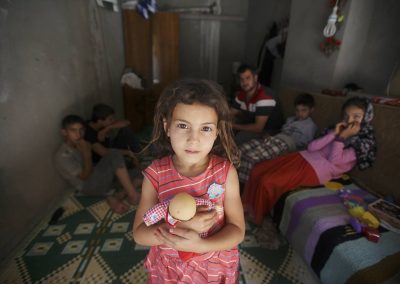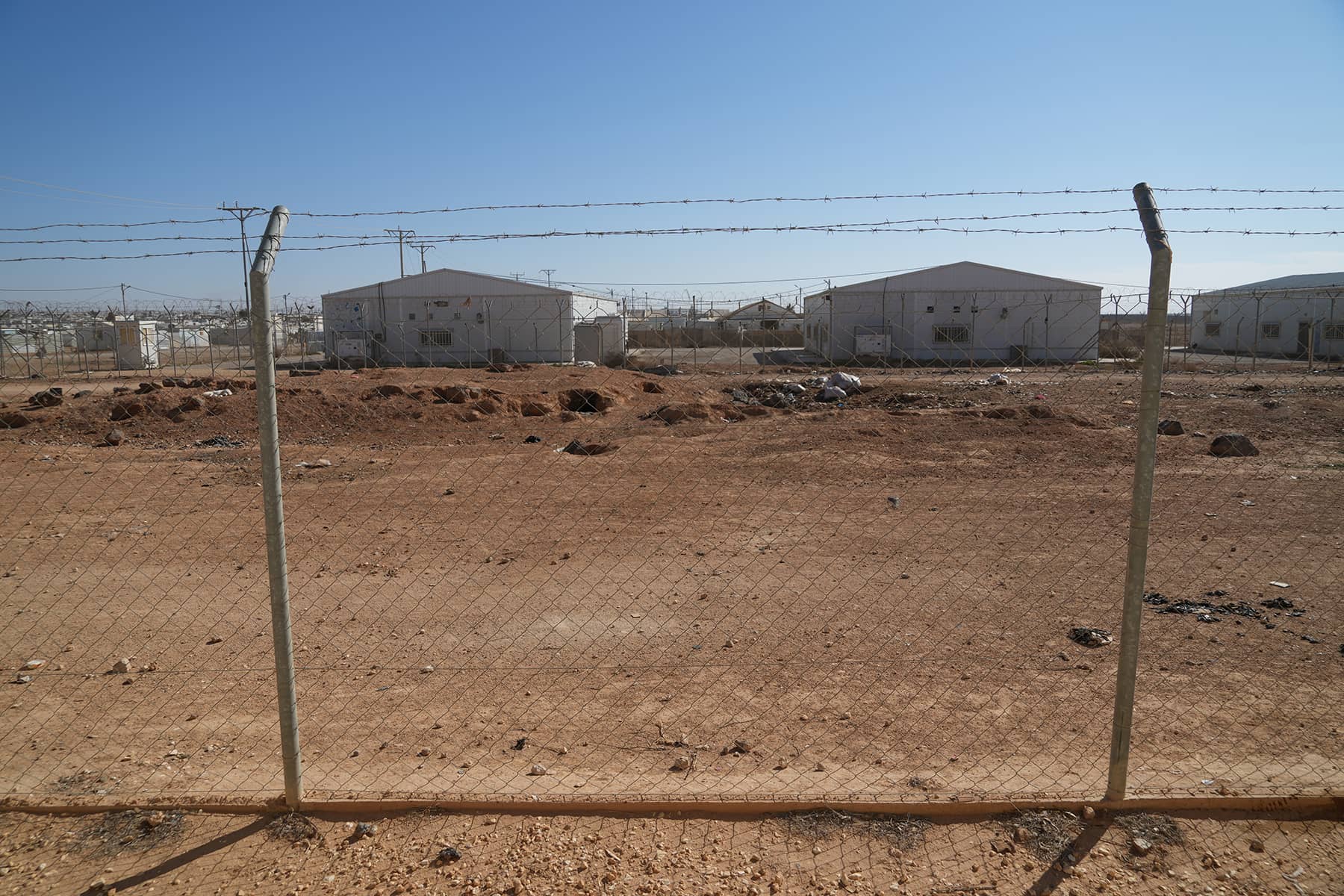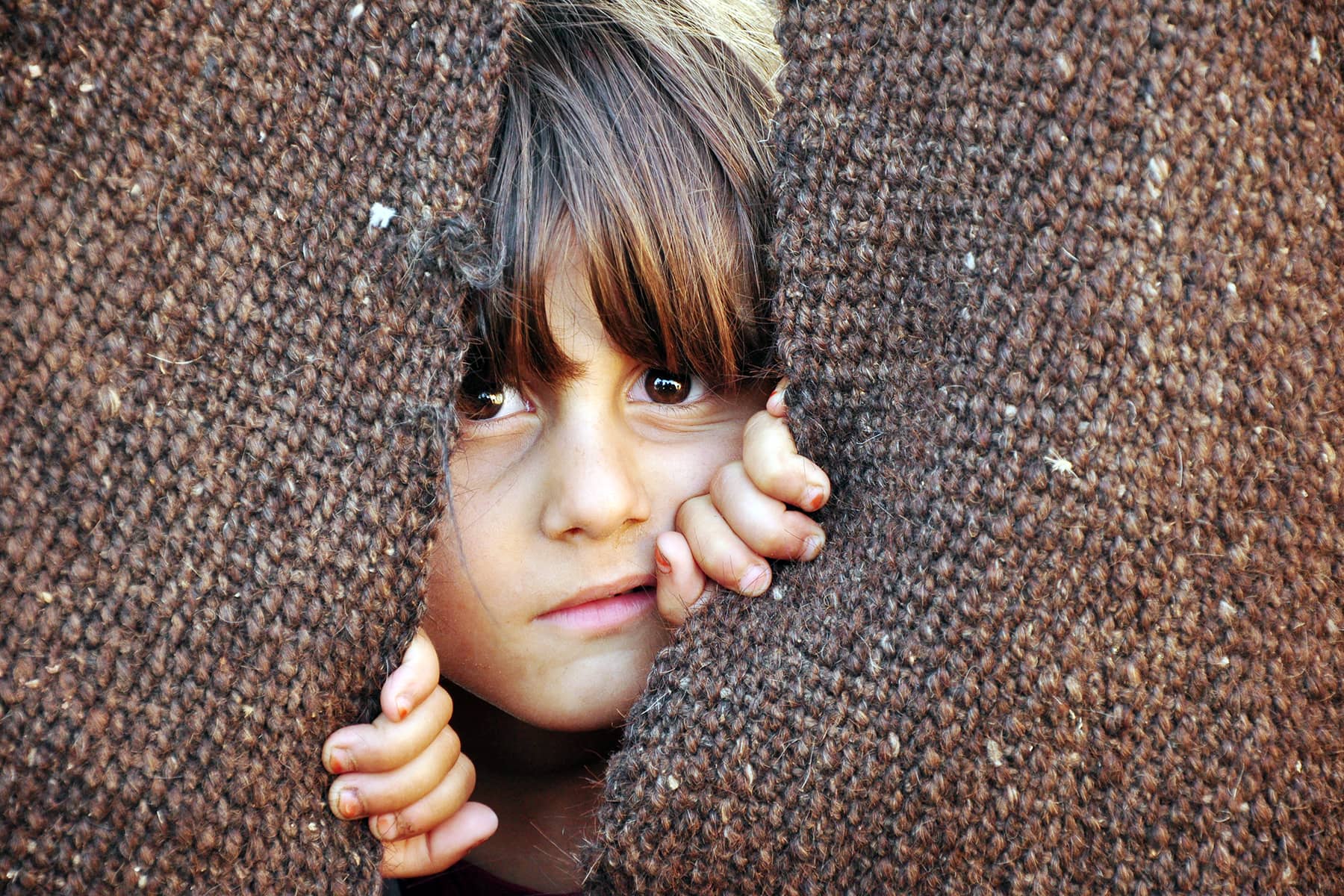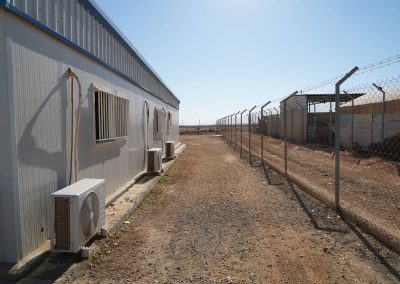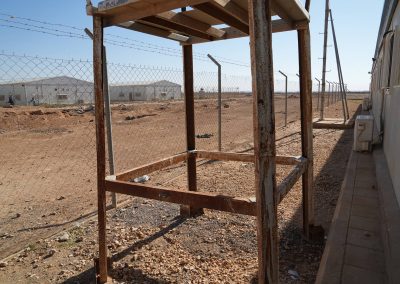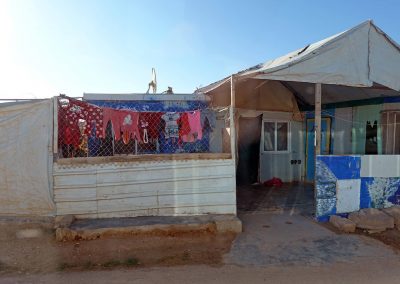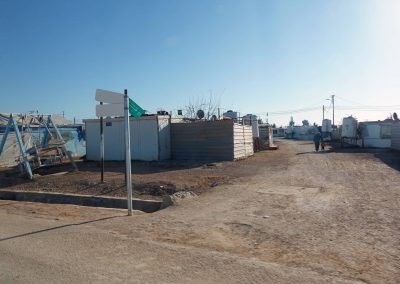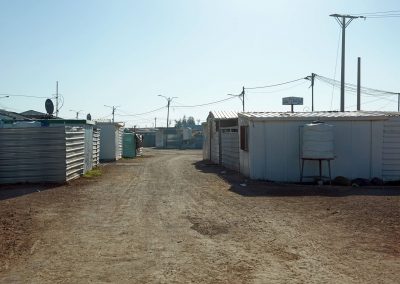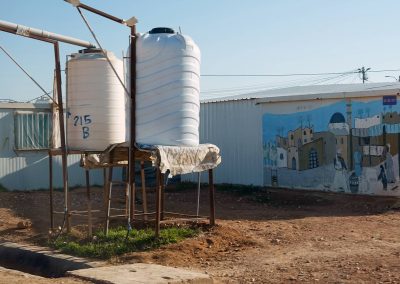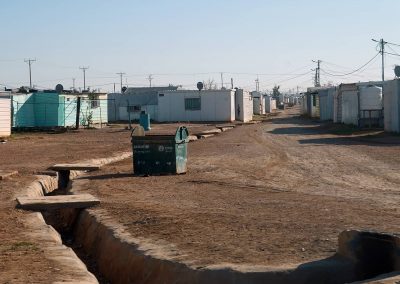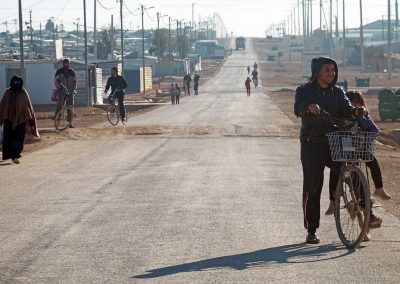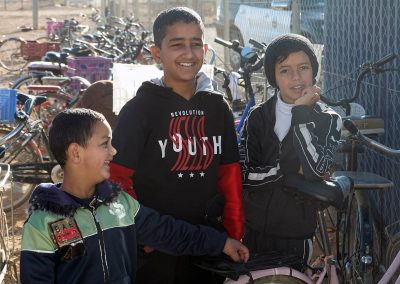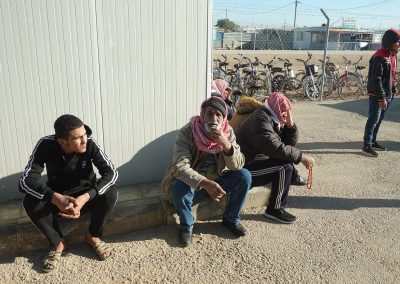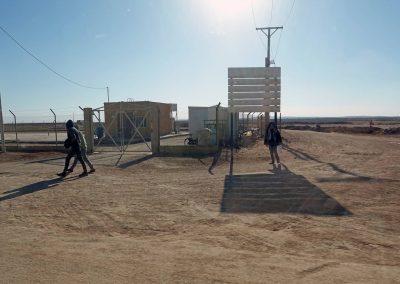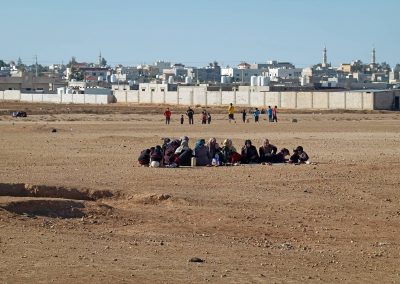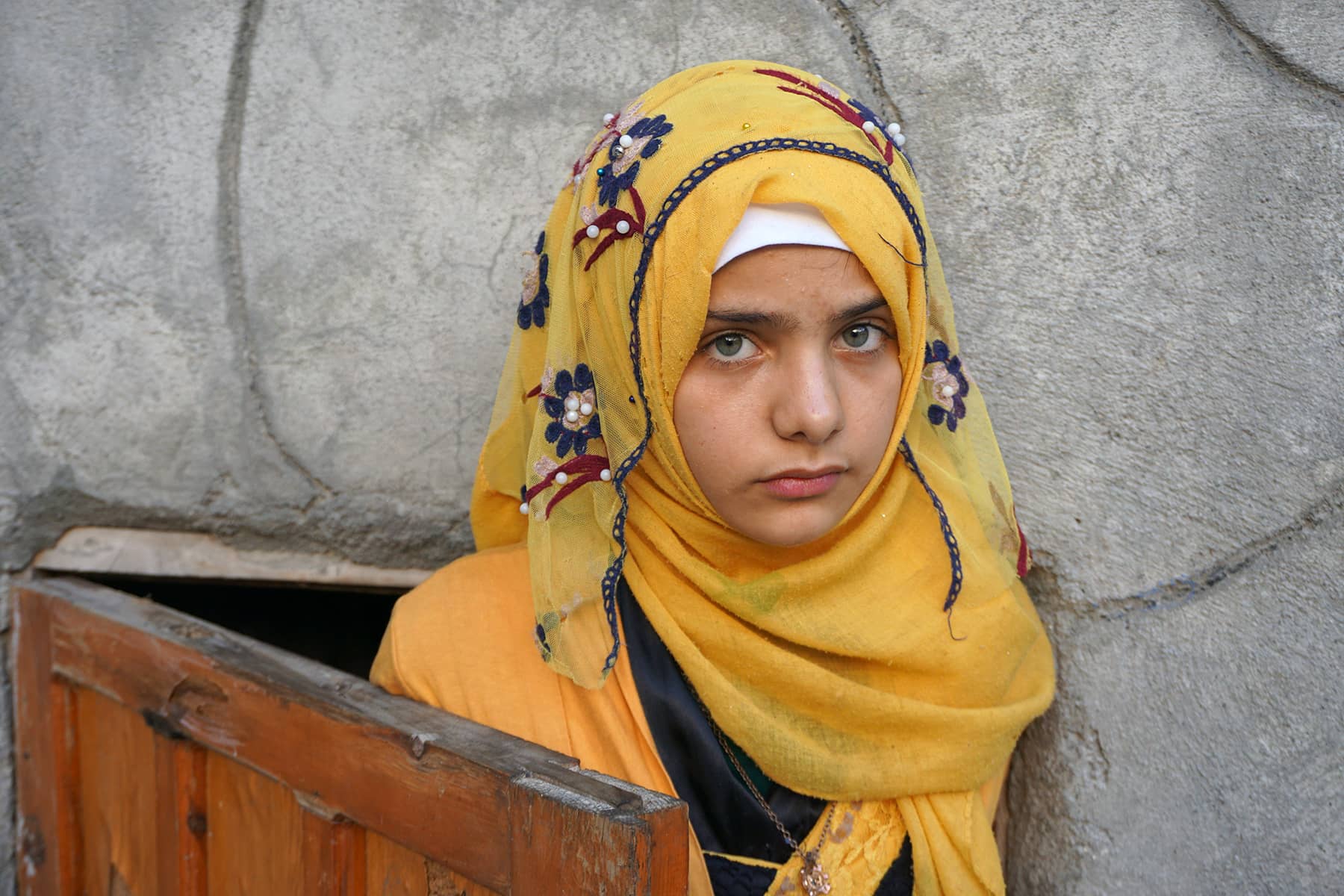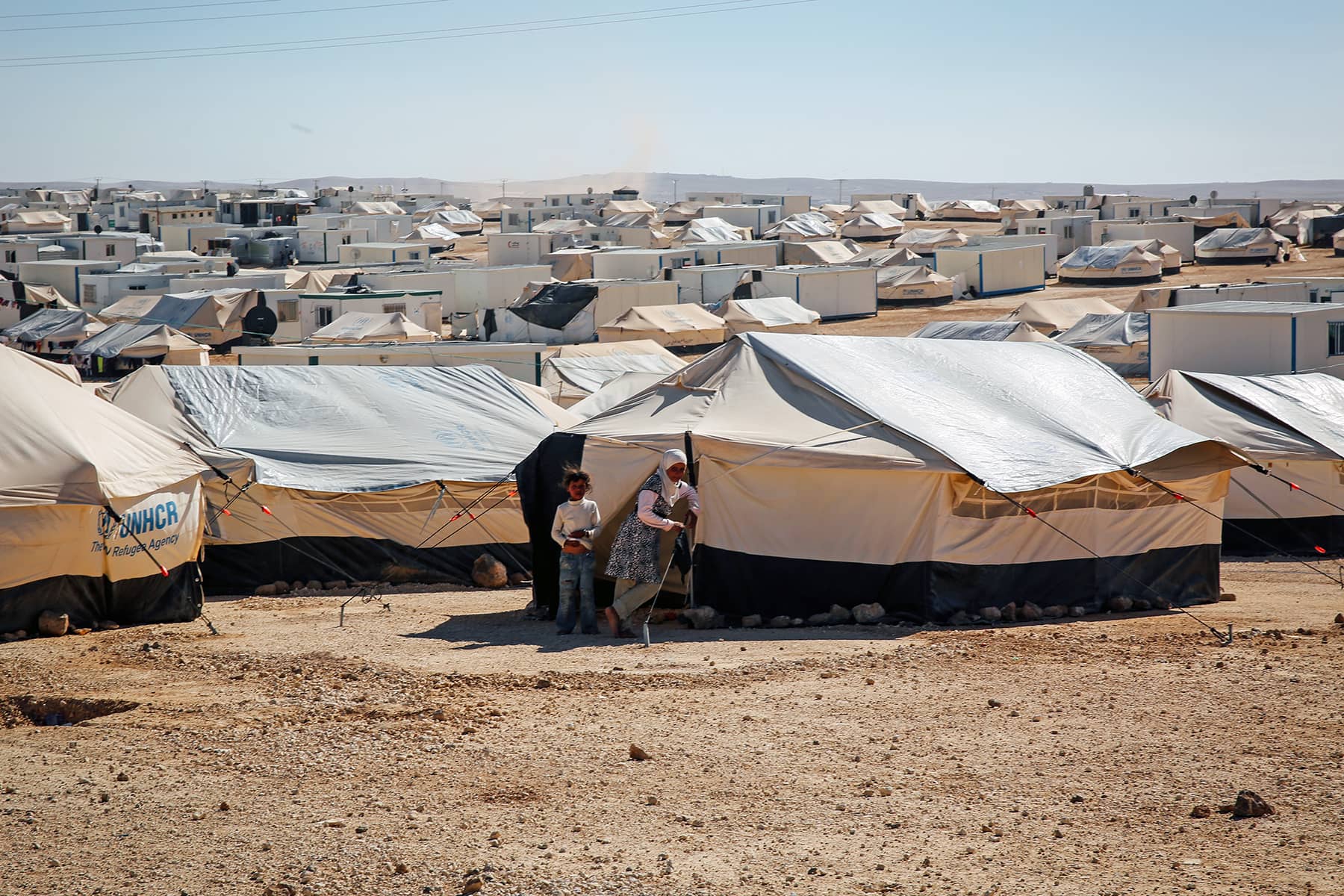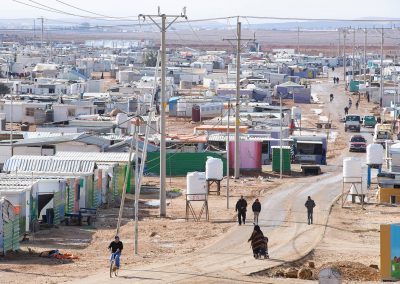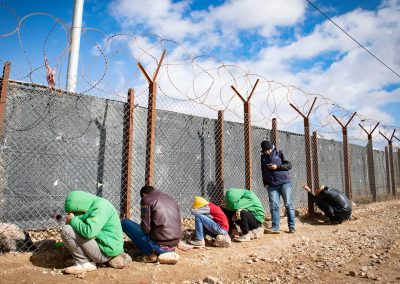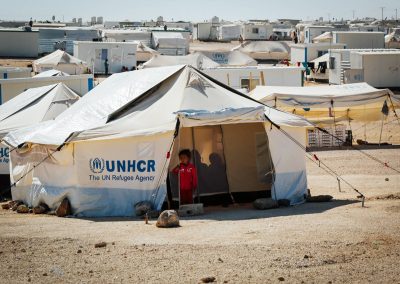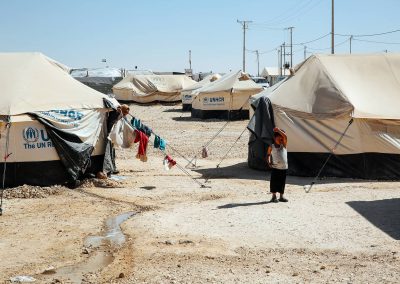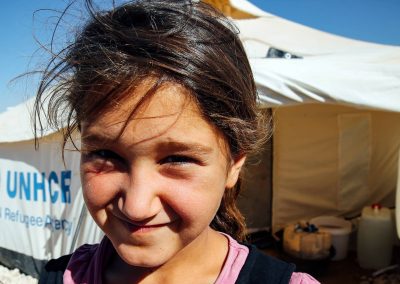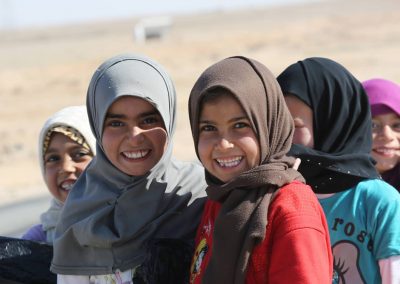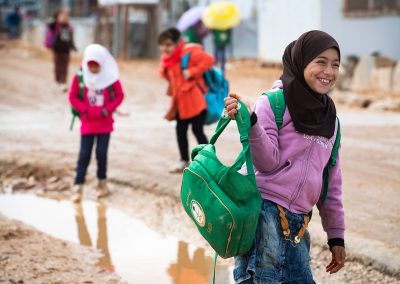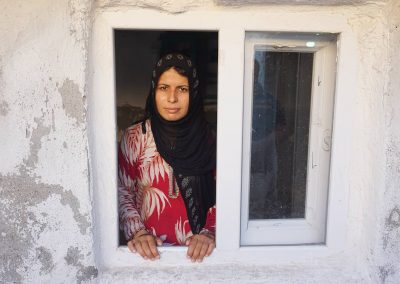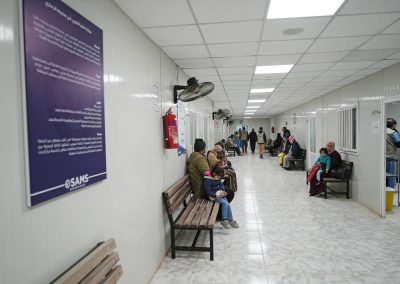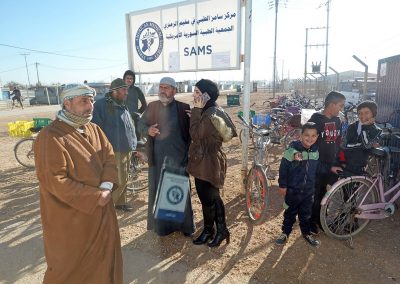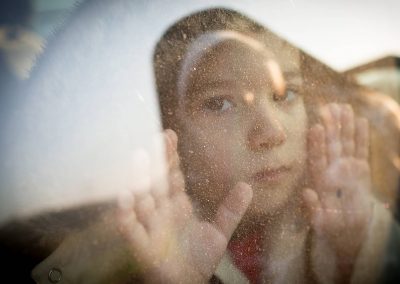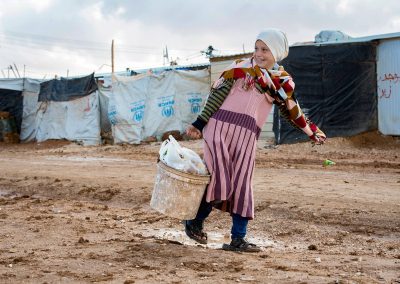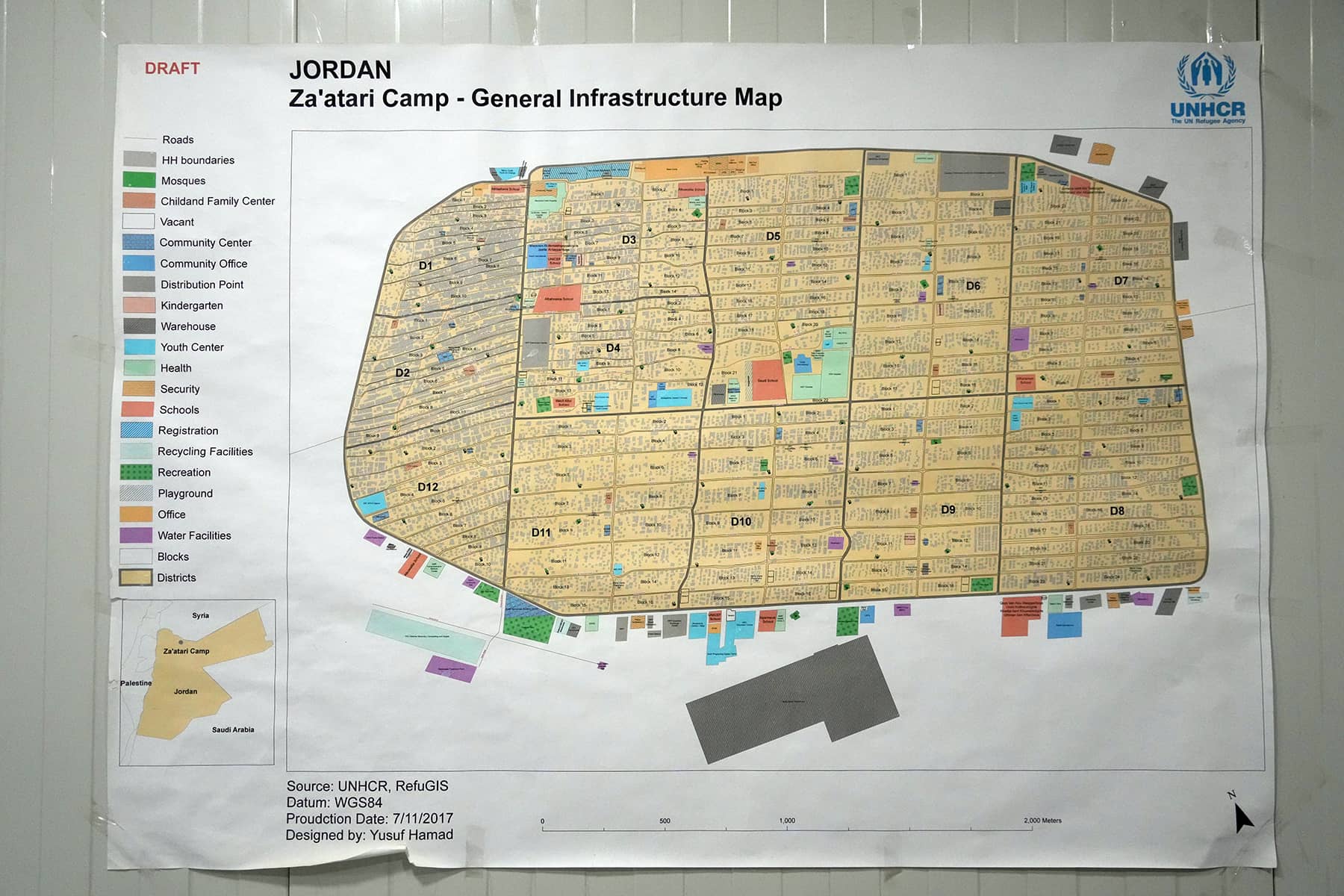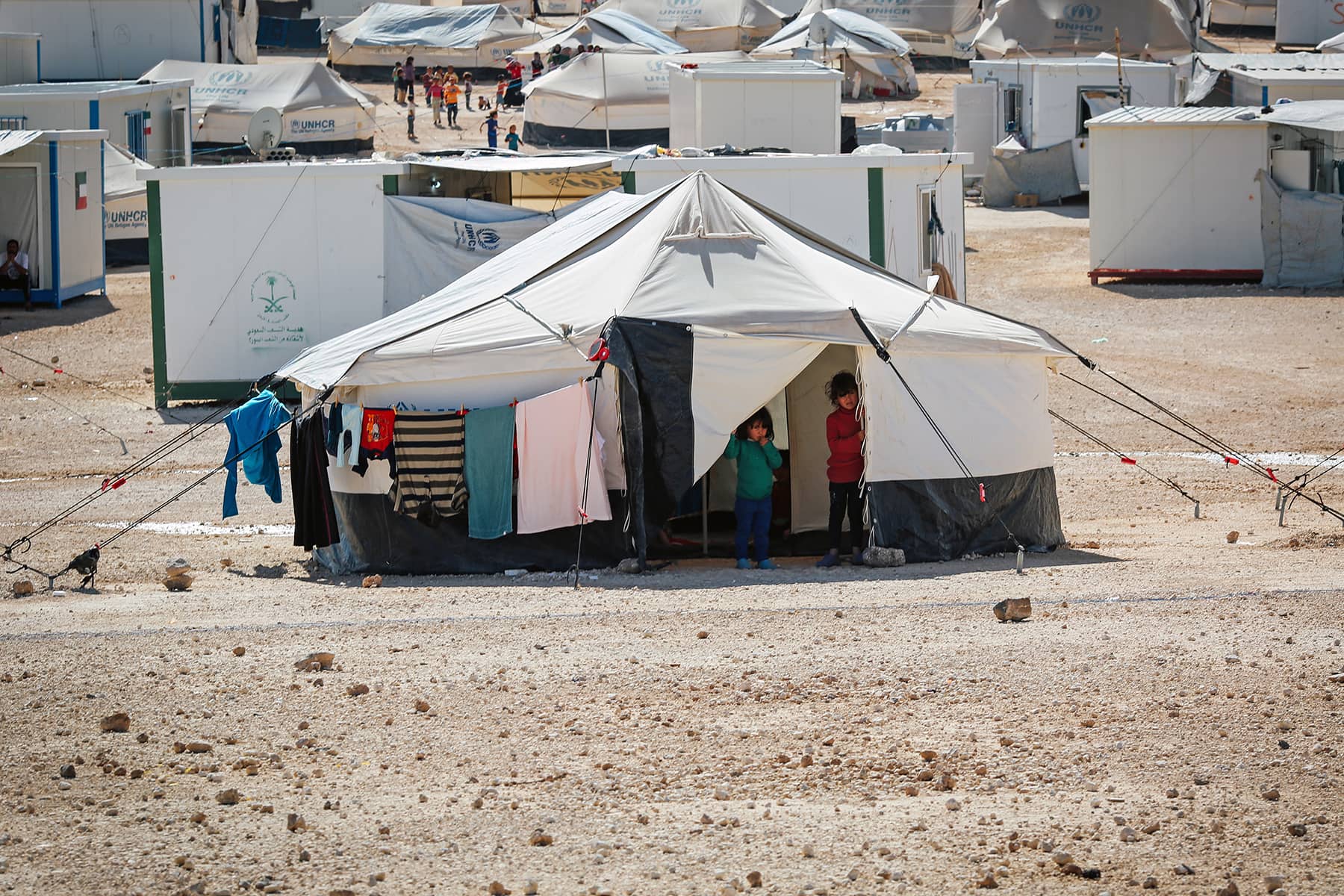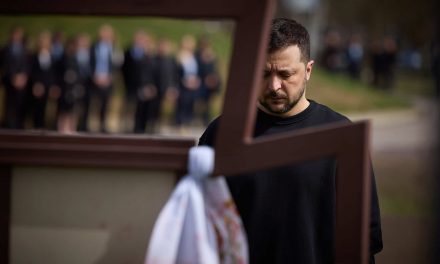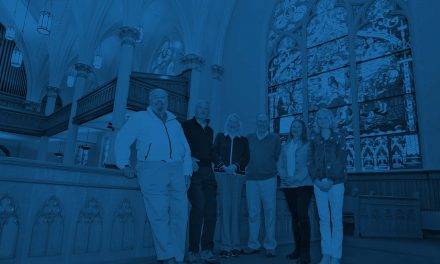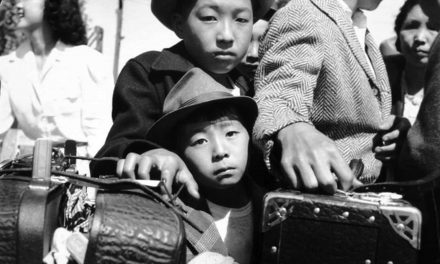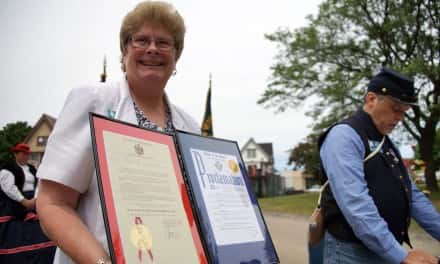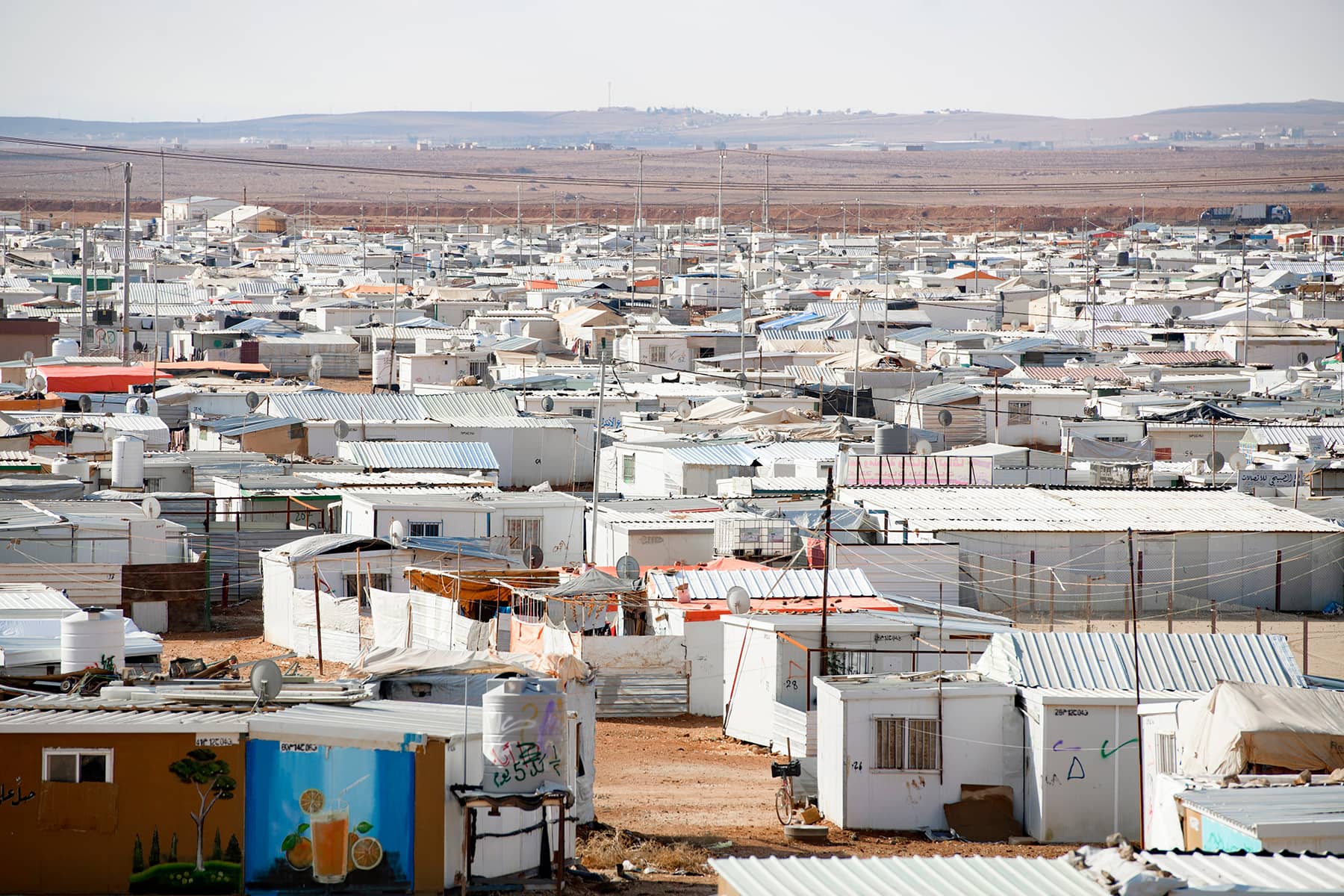
Medical Mission to Jordan: After more than a decade of Civil War in Syria, and continuing conflicts like the unprovoked Russian invasion of Ukraine that further displaced millions of civilians, understanding the longterm conditions that war refugees face remains relevant. But as public attention fades, such topics do not capture headlines today, even as the impact continues to be felt here in Milwaukee. mkeind.com/jordanmedicalmission
“To be a refugee means to leave everything that you ever loved behind. I think people have an idea of refugees as potential criminals, or potential extremists, and essentially the poor who have no means to support themselves. But Syria had a sizable middle class of doctors and lawyers. My uncles owned a very successful cake factory, and had other businesses and shops. They employed people and had all these things in life because they worked hard for them. If you go to the Za’atari Refugee Camp, you will hear stories just like this. There are people who were attorneys and engineers, and they were forced to leave it all.” – Dr. Jihad Shoshara MD
When Americans talk about refugees, it is always like they are inanimate objects or statistics and not people. Political rhetoric has weaponized their image to be not just lazy welfare recipients, but dangerous influences that threaten America’s utopia because of their different culture.
If the Syrian Civil War had not gone the way it did, millions of Syrians would not have flooded into Europe. That mass migration would not have created a cultural and political backlash that nearly destabilized the Continent. It sent shockwaves around the world, which we are still feeling. If only events in Syria had gone a different way, there would not have been the outflow of refugees.
The Syrian refugee crisis was the result of a violent crackdown on public demonstrations by the government in March 2011. A group of teenagers had been arrested for anti-government graffiti in the southern town of Daraa. The incident sparked peaceful public protests throughout Syria, which were brutally suppressed by security forces.
The conflict quickly escalated and the country descended into a bloody Civil War that forced millions of Syrian families out of their homes. Eleven years later, more than 13.4 million people still need humanitarian assistance, including 5.9 million who need acute care.
“Now just imagine if you had your own career, you have everything that you worked so hard to achieve in your life. And then it is all gone. You have to run and leave it behind. That is what it is for these Syrians. Their lives were ripped out from under them. The purpose that made them feel they had done good, and what they had achieved in life, it was all gone.” – Dr. Jihad Shoshara MD
Za’atari Refugee Camp opened on July 28, 2012, a day after 450 Syrians fled the fighting in Syria and crossed the desert under the cover of darkness into neighboring Jordan. Within a year, the camp’s population had skyrocketed to 120,000 people.
The camp has become a symbol of the long-running Syrian refugee crisis. The tents, that were designed to only provide a temporary shelter until the refugees could return home in a few weeks, were eventually replaced by fiberglass and metal shelters. Dirt paths because paved roads. Schools and hospitals were built to keep up with the demand. It eventually became a permanent refugee city.
Humanitarian support for displaced individuals and families in the Za’atari Refugee Camp has been spearheaded by the Jordanian government and UNHCR, with almost 1,200 staff from 32 different international and Jordanian organizations working in the camp. The humanitarian assistance would not have been possible without support from the international community.
After eleven years, 80,000 displaced Syrians continue to call the Za’atari Refugee Camp their home. More than 20,000 births have been recorded in Za’atari since its opening. Relief organizations have shared concerns that there were limited opportunities for the many children who are born in the camp every year.
The camp has 32 schools, 58 community centers, and 8 health facilities that operate alongside a civil defense and community police force. Za’atari has also witnessed refugee entrepreneurship since its very beginning. Determined to get back on their feet, refugees set up almost 1,800 shops and businesses within the camp.
“I do not want to create the impression that Syrian refugees are not grateful for the haven that they have been given in Jordan and other countries, because they are all very grateful. But if you ask any refugee where they would rather go – including places like Germany, France, the United States – any place they can be safe, they will say the same thing. They want to go back to Syria. If it was not for the war, they would still be there. Nobody wants to leave their home, but they do want to be safe.” – Dr. Jihad Shoshara MD
While the Za’atari Refugee Camp is credited with saving thousands of lives, aid organizations have warned that the situation was not sustainable. The weather-beaten temporary shelters have increasingly shown their limitations.
The caravans, which replaced tents in 2013, have a normal life span of six to eight years. Many of them are now in need of urgent repair or replacement. In 2021 alone more than 7,000 refugees requested support for maintenance of their shelters, because roofs, windows, and walls had become cracked. The structural failures left some residents exposed to the elements.
The electrical supply has been another area of concern. While a solar plant was opened to power the camp in 2017, its capacity was only able to meet the needs of all residents for 11.5 hours a day. In recent months, as electricity demand increased for the summer, UNHCR had to reduce its energy output to nine hours of power per day. The reduction was due the cost of additional electricity needed to meet the demands that the solar plant could not supply.
In addition to the COVID-19 related economic shocks of recent years, the resilience of camp residents and vulnerable Jordanians alike have faced dire challenges. Two thirds of refugee families in Za’atari Camp have said they are in debt. Nearly 92% of those families reported resorting to negative coping strategies, such as reducing food intake or accepting high-risk jobs.
Jordan hosts 675,000 registered refugees from Syria. Most Syrian refugees in Jordan live in its towns and villages among local communities. Only 17% reside in the two main refugee camps, Za’atari and Azraq.
Approximately 92% of refugees who have fled to neighboring countries live in rural and urban settings, with only roughly 5% living in refugee camps. However, living outside refugee camps has not guaranteed success or stability. More than 70% of Syrian refugees are living in poverty, with limited access to basic services, education, or job opportunities. It remains unlikely that developments will change in the near future to allow any of the refugees to return home.
With no immediate solution to the conflict in sight, and humanitarian conditions deteriorating at a worrying pace, stakeholders have struggled to find long-term solutions for all Syrian refugees in Jordan and beyond.
It is hard for someone in Milwaukee, busy with their own life, to think of others who are suffering in some far away place. Everywhere we look at home or the workplace, we are going to see suffering. It is not something we can escape. But we can see how we are all connected and do something, no matter how small, to have a positive impact.
This editorial feature is one of a multi-part explanatory series about the “Dr. Majdi Omar” SAMS Jordan January 2023 Medical Mission. The journalism project embedded a Milwaukee Independent photojournalist, from January 21 to 26, 2023, with a group of Syrian American doctors from Milwaukee and Chicago. It documented their trip to Jordan and the medical work done at clinic locations like Za’atari Camp, Salt, Jerash, En Albasha and Marej in Amman, and Basma in Ma’adab. Medical Mission to Jordan: A journey from Milwaukee to help Syrian Refugees, shares the personal voices, stories, images, and conditions around those involved in the Syrian American Medical Society (SAMS) mission to Jordan. It also explores the refugee experience, and the intimate connections of local medical professionals, who put their work on hold and left their families behind for a couple weeks to provide healing to others who have endured a generation of trauma.
Series: Medical Mission to Jordan
- Medical Mission to Jordan: Traveling from Milwaukee to document the conditions of displaced Syrians
- Refugees in need: How the Syrian American Medical Society is able to provide vital medical services
- Waleed Najeeb: A spiritual duty to bring specialized relief to those suffering from a decade of war
- Za’atari Refugee Camp: Syrians struggle with a decade of life in the bubble of a temporary shelter
- Jihad Shoshara: How medical advocacy empowers Syrians living with guilt and trauma from a distance
- Deadliest in a decade: Untold numbers remain buried under rubble in Syria after devastating earthquake
- Medical Mission to Jordan: A visual diary from a week with Syrian refugees and SAMS volunteers
- Hazar Jaber: Advocating for oral health so poverty does not make sugar into a poison for children
- Bassel Atassi: Holding onto a family identity after Syria went from a home country to a ghost country
- Medical Mission to Jordan: The faces of Syrian refugees and their health struggles after years of war
- Abrar Qureshi: Finding a "Street of Happiness" among the faded ruins of hope in Za’atari
- Abdullah Chahin: Building a collective purpose to provide medical care as a Syrian in exile
- Zein Barakat: A spirit of volunteerism that nurtures an abundance of compassion, love, and humility
- Hima Humeda: A Syrian college student’s story from childhood heart surgeries to caring for war refugees
- A clarity of vision: Giving displaced Syrian children the ability to see a world full of possibilities
The 7.8 magnitude earthquake struck parts of Syria and Türkiye on February 7. It came a week after the SAMS Medical Mission ended, and while Milwaukee Independent finished the final production of this editorial series. The public is encouraged to make donations to the Syrian American Medical Society in support of their vital crisis relief work.
Lее Mаtz
Lее Mаtz, Kafein Kolik, AlfaNet, Ehab Mousa, Zurijeta, and Richard Juilliart

